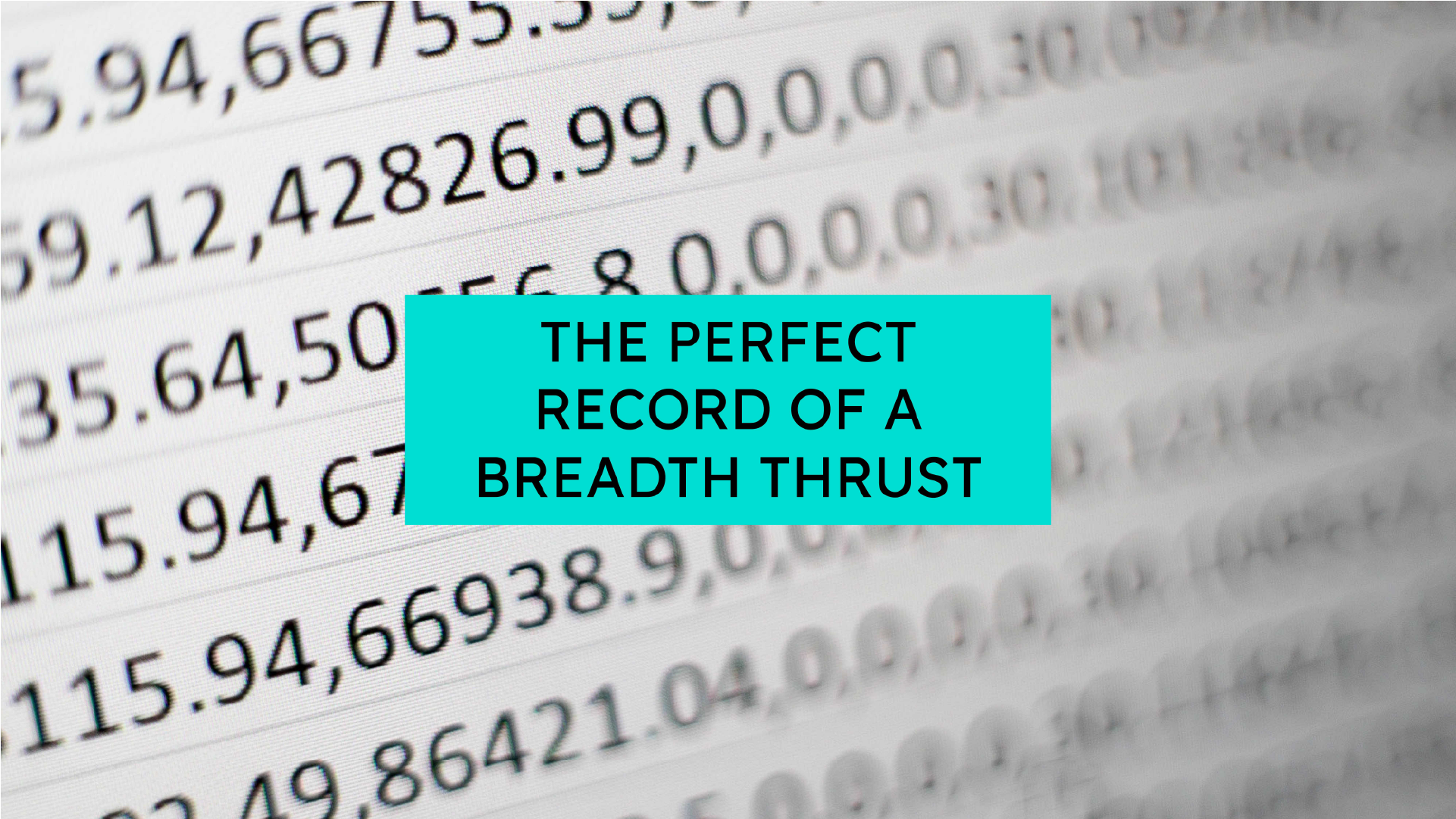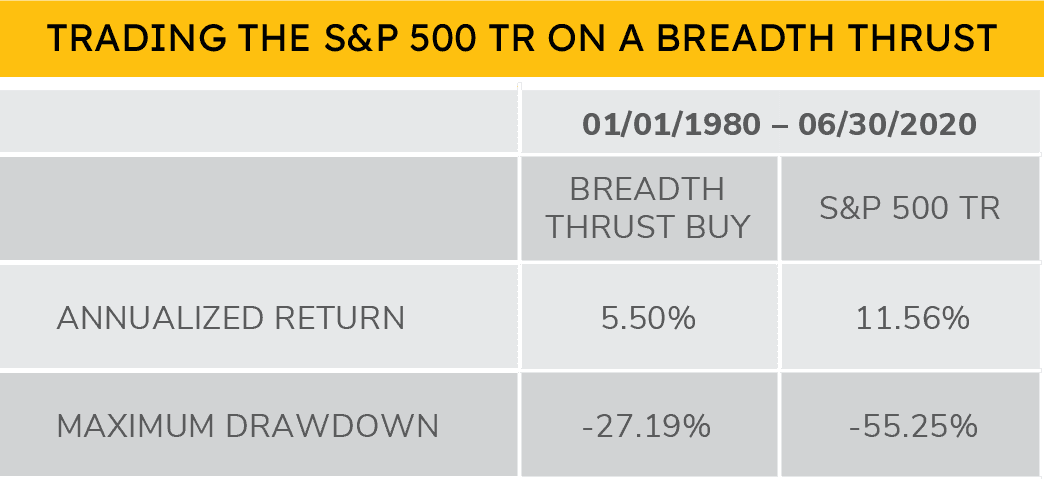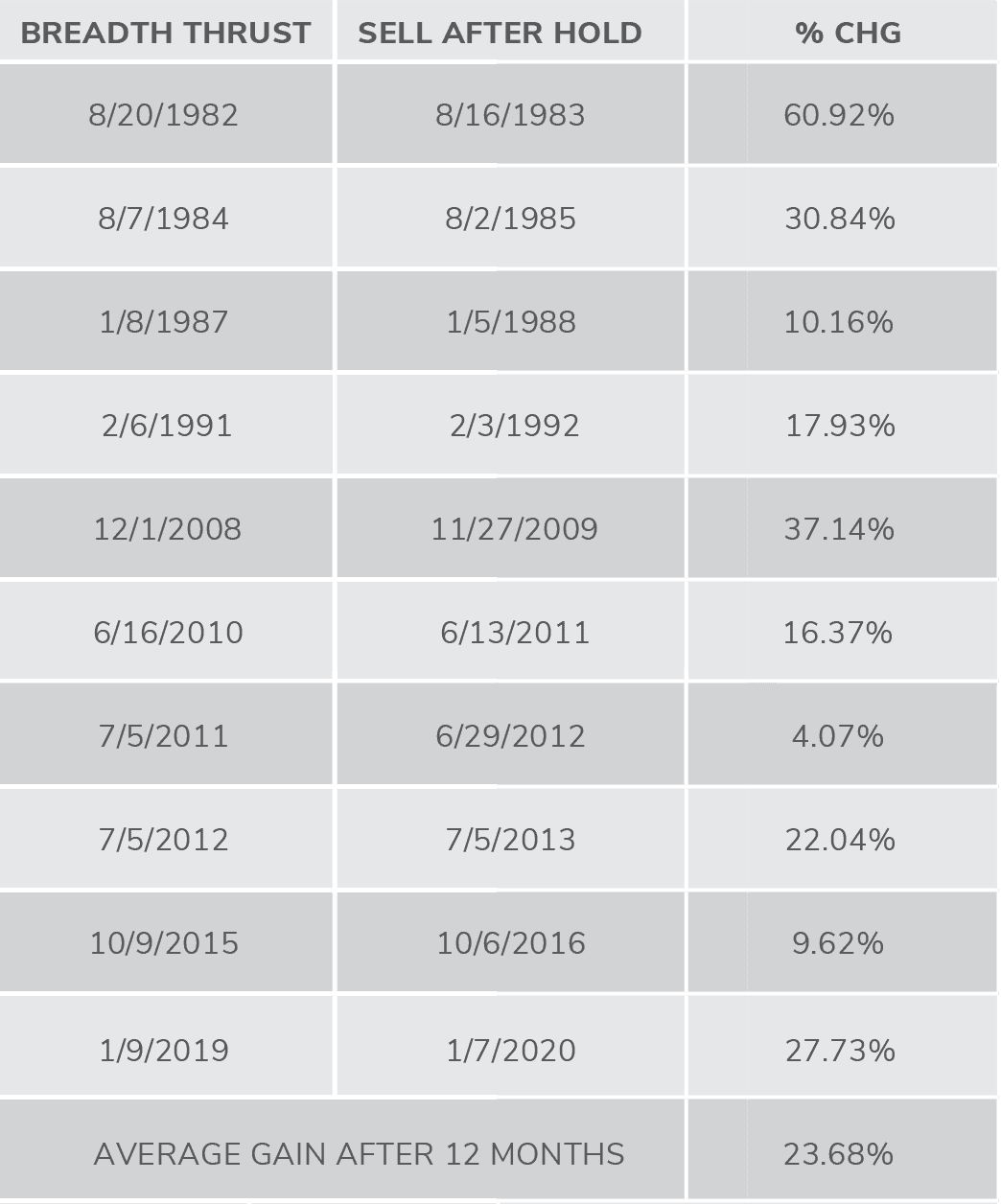
There are literally hundreds of data points that are injected into our technical trading systems. Each piece of data has its own story.
The same data point can be used in a complex trading system as well as a very simple measure of the current market environment.
For example, we previously wrote about the advantages of using the Advance Decline Line to determine the underlying health of the stock market. But how else can this data point be used?
Market breadth can be gauged by the Advance Decline Line and has been used for decades by market technicians to determine the underlying health of the stock market.
First, let’s recap how this data point it’s utilized, starting with the definition:
“The AD Line is a market breadth indicator that analyzes the number of stocks advancing minus those that are declining. Positive market breadth occurs when more stocks are advancing than are declining, suggesting that the bulls are in control of the market’s momentum. A bearish momentum would result when there are more declining stocks.”
We went on to discuss one of the ways we use the AD line by measuring divergences:
“Divergence is the disagreement between the stock market index and the AD Line and can result in significant implications for investment management. If the index moves up while the AD Line moves down, the index may be misleading about the true direction of the overall market.”
Finally, we discussed how investors can utilize such a tool:
“Identifying a divergence can help the investors recognize and react appropriately to a change in price action. It tells us something is changing, and investors must decide, if they want to take some risk off the table. Seeing divergence increases the profitability of protecting your investment gains.”
Now you’re up to speed.

Breadth Thrust
A breadth thrust is when you have an extreme number of stocks advancing, rather than declining over a short period of time.
While we have seen many variations of this this indicator, we define a breadth thrust two ways;
- The ratio of advancing stocks to declining stocks on the NYSE rising is 2.0 or greater over a 10-day period.
OR - The ratio of advancing to declining stocks exceeds 2.5 over a 5-day period.
In theory, this is often a turning point in the market as the sellers have run out of things to sell and buyers are frantically buying beaten down stocks.
Since there is no definition of when to sell, this is more of a market background system where you would want to test the market performance following this type of signal.
Testing the Theory

The best way to test any “theory” is to transform it into a trading system.
Using the S&P 500 TR as our security (you can’t trade an index; this is for illustrative purposes only) the trading system is straightforward:
- BUY the S&P 500 TR when the ratio of advancing stocks to declining stocks on the NYSE rises to 2.0 or greater over a 10-day period or when the ratio of advancing to declining stocks exceeds 2.5 over a 5-day period.
- SELL the S&P 500 TR after holding for 12 months.
- When in cash, the money is invested in a 3-month T-bill.
If you used the basic system listed above, how would you fare relative to the S&P 500 TR?

As you can see using it as a trading system is a not very good idea. Even though you can successfully reduce risk there are just too many gains left on the table.
However, as I mentioned earlier, because there is no defined sell signal it’s foolish to use this as a trading system.
If this is truly a “turning point” in market action, then its best to look at in a “hold expiration” lens.
In this case lets simply look at the performance of the S&P 500 twelve months after a market breadth is generated.

Since 1980 there have been ten instances of a breadth thrust that were able to complete the 12 month hold.
The results have been impressive as the market has been higher 100% of the time and, in most cases, had strong double-digit gains with the average return being approximately 24%.
It doesn’t come without risk, as you would’ve sat though the 1987 bear market and the second half of the 2008 bear.
The most recent breadth thrust occurred on 04/13/2020 and, in the short term, the returns have been impressive. Will this simple system’s perfect track record continue?

Let’s unpack all this data.
- A breadth thrust is not a viable trading system but can be a great tool to gauge the current market landscape.
- The forward-looking returns after a breadth thrust are incredible and with a perfect track record of success since 1980.
For full disclosure, this is simply to illustrate a point. This is not financial advice and these numbers do not reflect trading costs, taxes, fees, or anything else that is important.
Final Thoughts
Our money management process is designed to take the emotion out of investing. Trading based on your gut or news headlines is a surefire way to fail. We believe it’s best to use sound trading systems backed by empirical data.
However, relying on one trading tool is like trying to play golf with only one club, while it can absolutely be done, it’s not ideal. If you want to actively trade to manage risk, you need to be able to use a wide variety of indicators.
Happy Investing…
Disclosure: This information is prepared for general information only and should not be considered as individual investment advice nor as a solicitation to buy or offer to sell any securities. This material does not constitute any representation as to the suitability or appropriateness of any investment advisory program or security. Please visit our FULL DISCLOSURE page.
